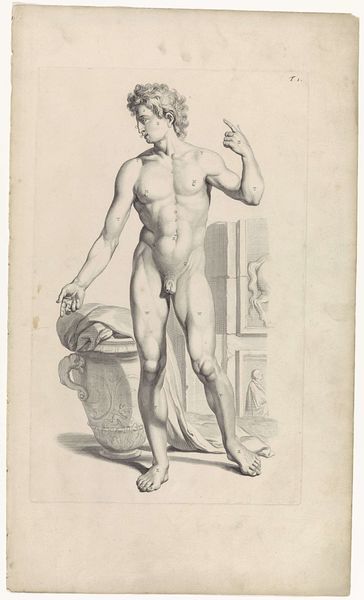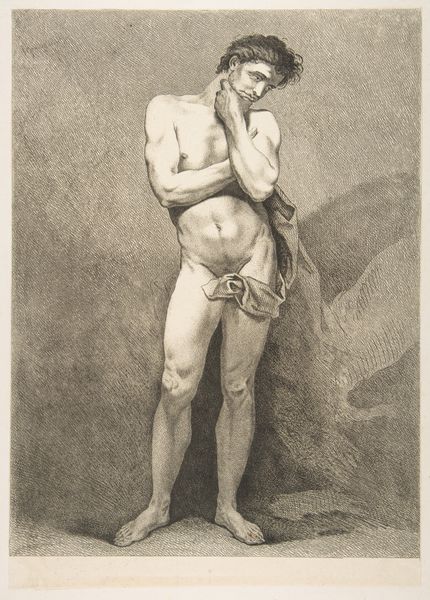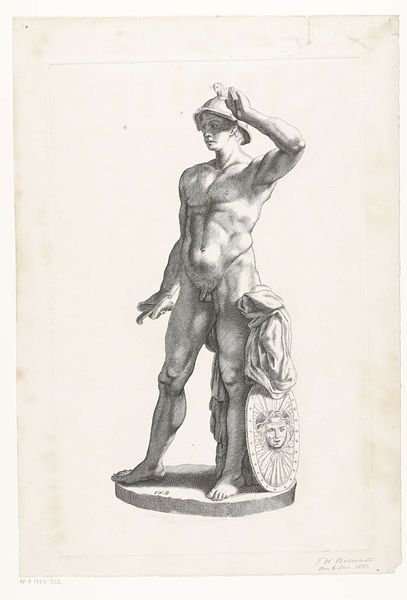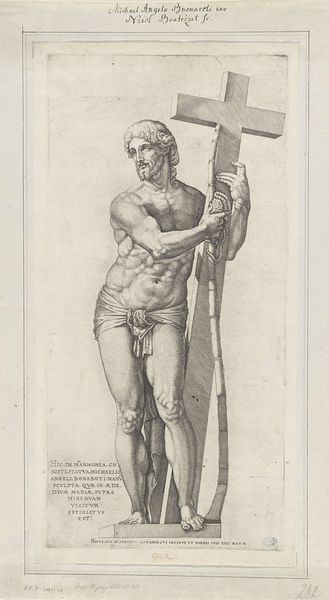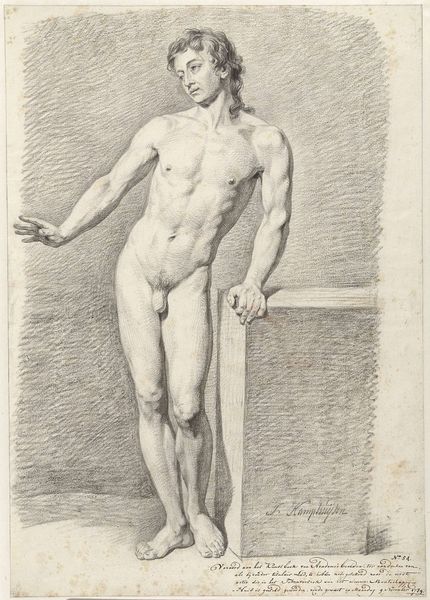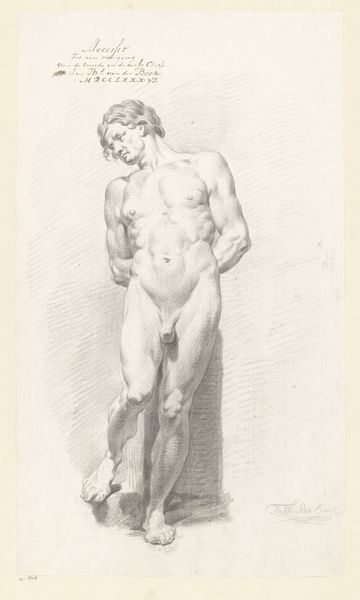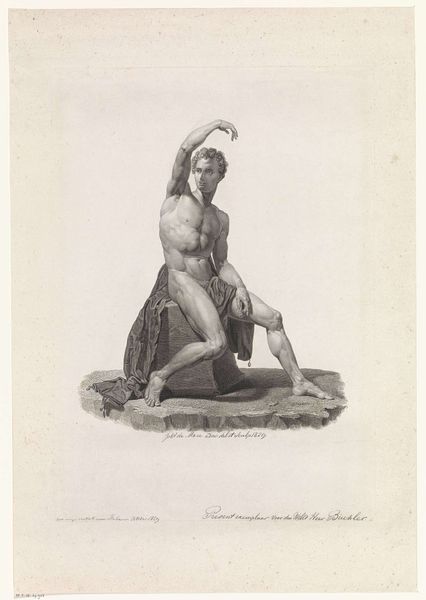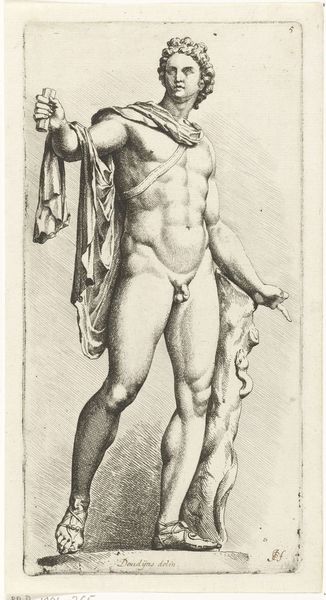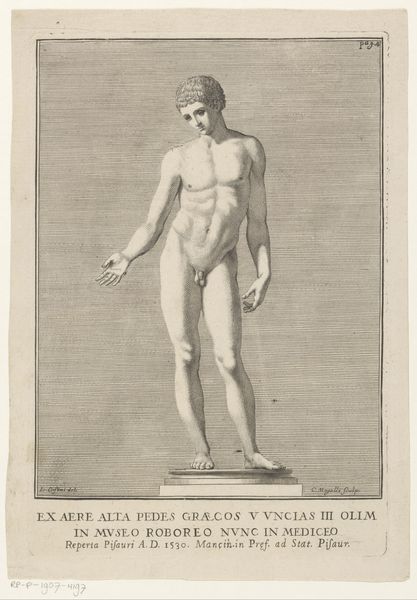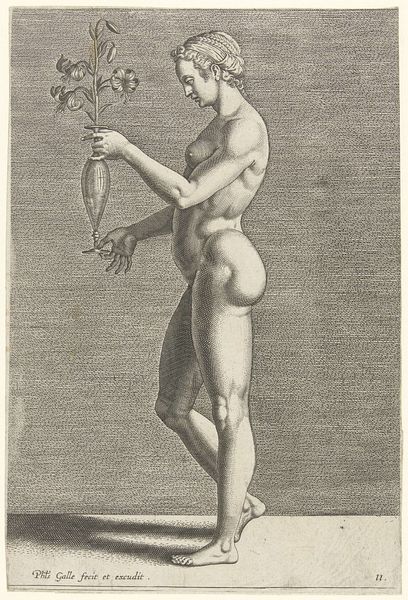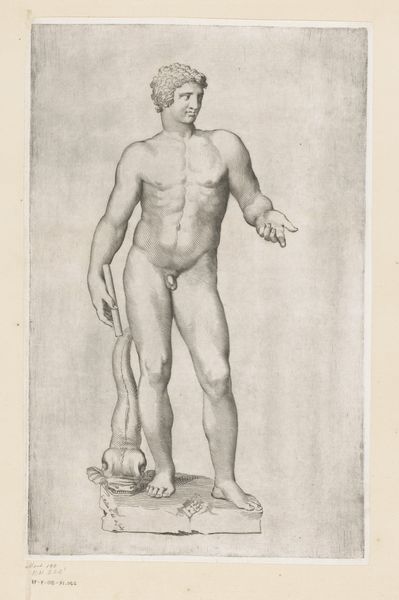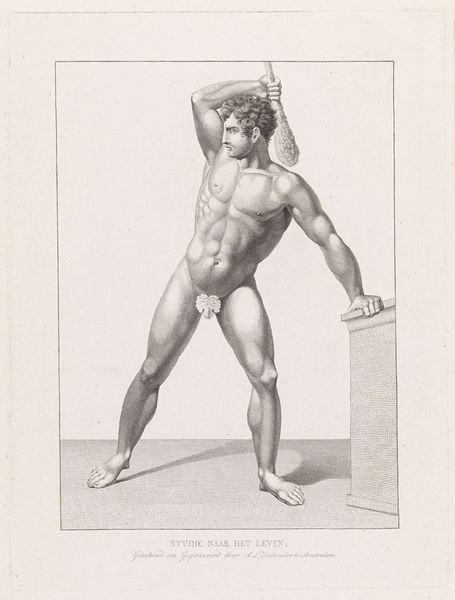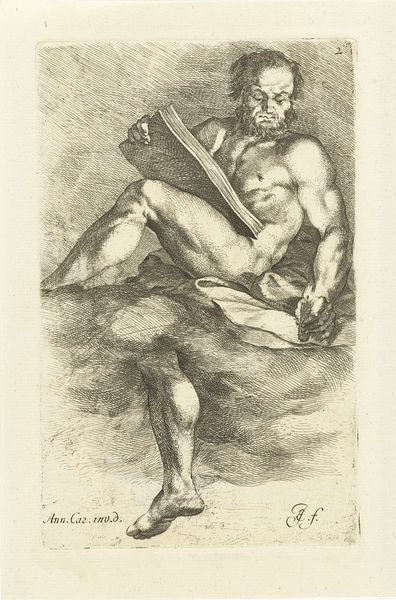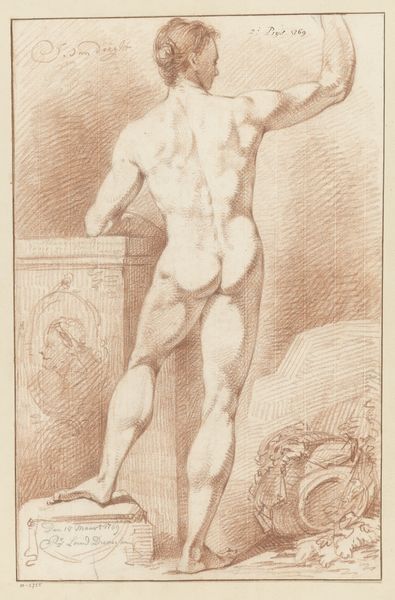
print, engraving
#
portrait
#
pencil drawn
# print
#
pencil sketch
#
caricature
#
classical-realism
#
charcoal drawing
#
mannerism
#
figuration
#
pencil drawing
#
portrait drawing
#
history-painting
#
nude
#
engraving
Dimensions: height 427 mm, width 247 mm
Copyright: Rijks Museum: Open Domain
Editor: This print, "Standbeeld van Antinoüs," created around 1580 by Pieter Perret, is quite striking in its classical form. It really emphasizes the musculature and idealized physique of Antinous. How do you see this piece, especially in relation to its materials and historical context? Curator: Well, the engraving itself offers a direct line to thinking about production. This image wouldn't have existed without a highly skilled engraver meticulously working with metal and tools. Consider the economics here. Who commissioned this? Who could afford to disseminate such images, and what was the intended audience? These prints weren't simply aesthetic objects; they were commodities in a visual market. Editor: That’s fascinating. I hadn't considered the print as a commodity in itself, rather than just a reproduction of a statue. Does the act of creating multiple copies affect its value or artistic merit in some way? Curator: Absolutely. The act of reproduction democratizes the image, making classical ideals accessible to a wider audience beyond the elite who could afford original sculptures. However, it also alters the labor involved. Think of the craftsman, removed from the 'genius' of the sculptor, but still contributing significant skill and labor to propagate a specific image. What implications does this shift in labor have on our perception of "artistic value"? Editor: So, it's about questioning who controls the means of production and how that influences cultural values? Curator: Precisely. This print invites us to interrogate not only the artistic skill but also the socio-economic system that made its production and dissemination possible. Consider the relationship between the artist, the patron, and the consuming public. The image itself is only a fraction of the story. Editor: I’m now looking at this print in a whole new light. It's less about classical beauty and more about the system that allowed it to be distributed. Thanks for sharing this materialist perspective.
Comments
No comments
Be the first to comment and join the conversation on the ultimate creative platform.
